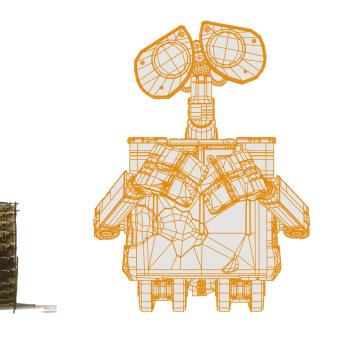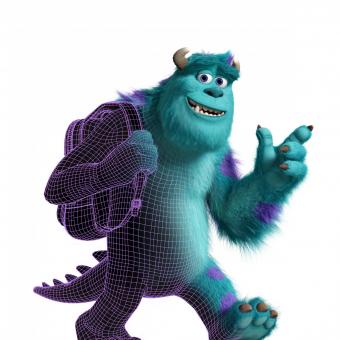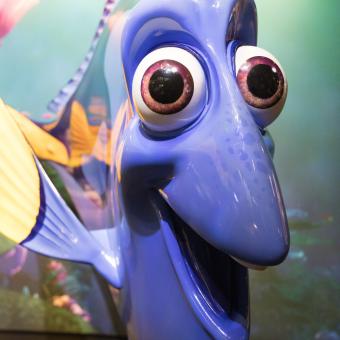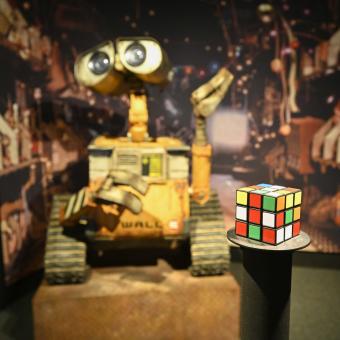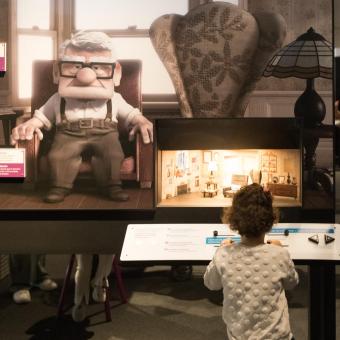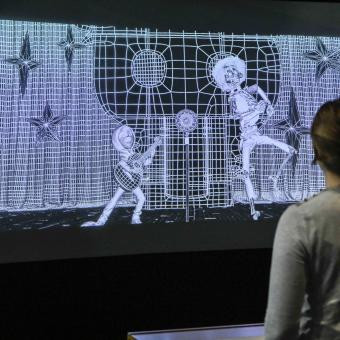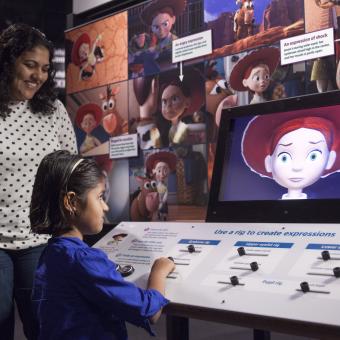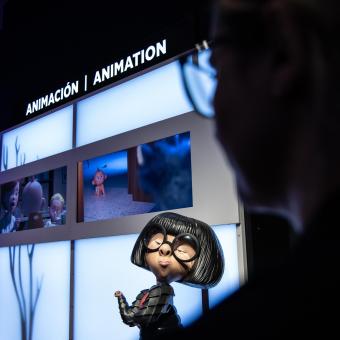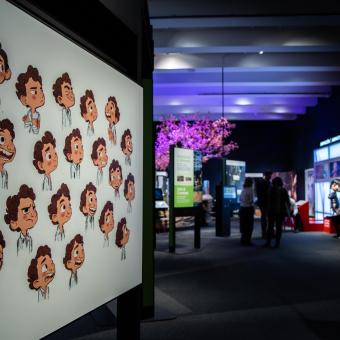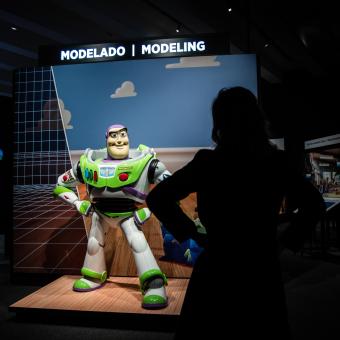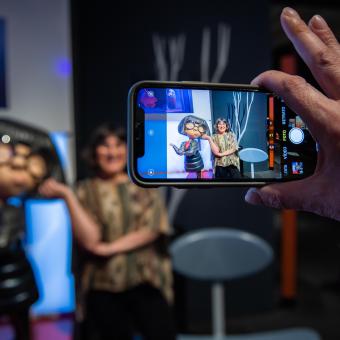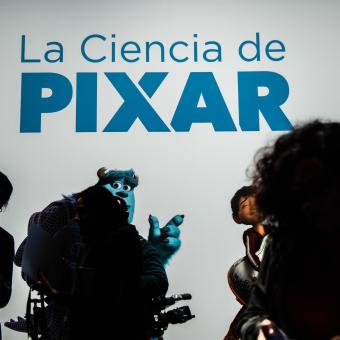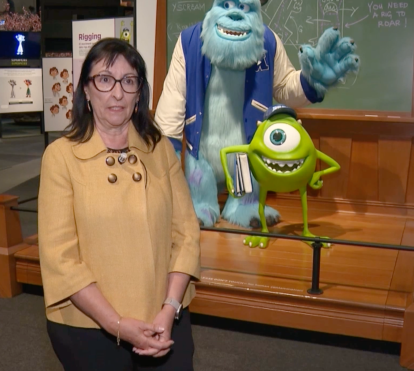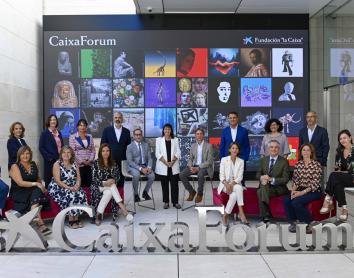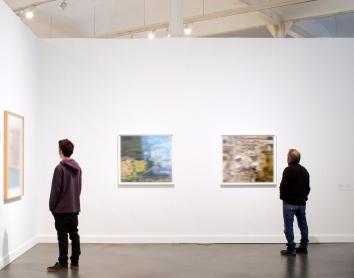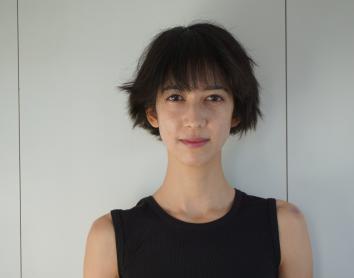
Discover first-hand the technical challenges behind Pixar’s films at CaixaForum Madrid, which is hosting The Science Behind Pixar exhibition, created by the Museum of Science, Boston, in collaboration with Pixar Animation Studios. The exhibition is divided into eight sections, corresponding to the steps in the process Pixar uses to transform an idea into a film. With specific examples from some of their most famous films, the public will be able to experiment with the techniques behind the modelling, rigging, surfaces, sets and cameras, animation, simulation, lighting and rendering of animated films.
The deputy general manager of the ”la Caixa” Foundation, Elisa Durán, the director of CaixaForum Madrid, Isabel Fuentes, and the director of science exhibitions of the ”la Caixa” Foundation, Javier Hidalgo, have today presented The Science Behind Pixar, an exhibition created by the Museum of Science, Boston and Pixar Animation Studios, which can be seen at CaixaForum Madrid until 8 September.
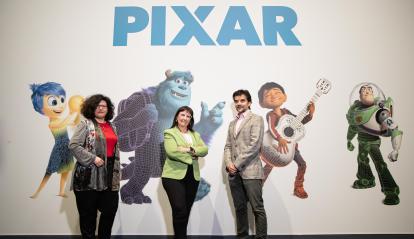
Art and creativity are inseparable from science and technology in computer-animated films. This is why the exhibition offers all kinds of fun facts on how they conceived their characters from the technical point of view, which is perhaps the least known but also essential element. In the exhibition, visitors can learn about the concepts of STEM (science, technology, engineering and mathematics) through fun interactive elements.
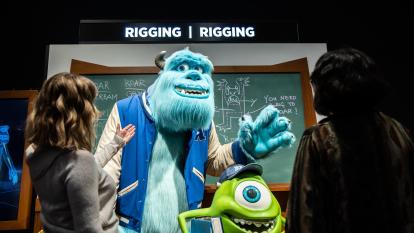


This is the third collaboration between the ”la Caixa” Foundation and Pixar Studios. In 2015, Pixar: 25 Years of Animation, represented a thorough review of this pioneering company’s work in computer animation in its 25 years of history. Subsequently, Pixar, Building Characters (which has travelled to five CaixaForums since 2020) focused on the visual design of the Pixar characters to best transmit the story and fit in with the other elements of the film. Now, the eight sections of The Science Behind Pixar will give us an insight into every stage of the technical process used by Pixar’s artists and computer scientists
The aim of the new exhibition is to peel away, layer by layer and in a way that is attractive for all audiences, the scientific, computer and mathematical concepts that lie behind our favourite Pixar characters. To do this, the exhibition is organised into eight sections, each of which explains in depth one specific step of Pixar’s technical process: Modelling, which allows characters to be created in 3D; Rigging, in which the virtual bones, muscles and joints are developed; design of Surfaces and Sets; Animation, which brings the story to life; Simulation, which provides automated movements; Lighting, which enhances the emotional impact, and Rendering, which turns 3D scenes into 2D images.
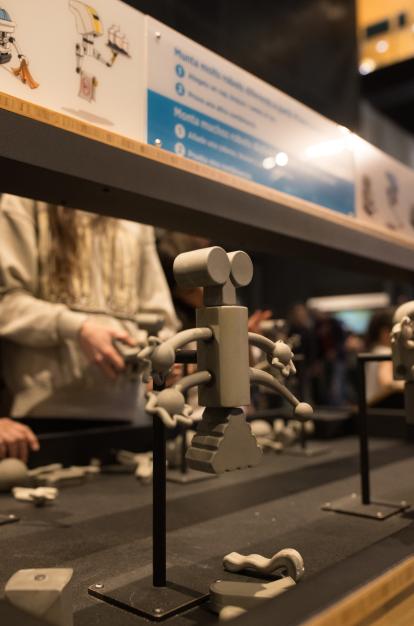
Throughout 815 square metres in CaixaForum Madrid, visitors will learn about all these steps that Pixar pays passionate attention to in order to bring its worlds and characters to life. Dozens of interactive and audiovisual elements will reveal what is hidden behind Pixar films, from the first-ever computer-animated feature film – Toy Story – which opened over two decades ago, to the release of Turning Red.
To better understand the science and maths that go into creating the worlds and characters of Pixar’s films, visitors will see audiovisuals and hear first-hand from members of the studios’ production teams. They will also be invited to experience different roles within the production pipeline, through screen-based activities and physical interactive elements.
In the Sets & Cameras section, for example, visitors will discover how camera placement and angles created a bug’s-eye view for A Bug’s Life; in Modelling, they will try their hand at creating a digital sculpture from an artist’s sketch and in Lighting they will use lights to solve challenges similar to ones Pixar faced in creating underwater scenes with virtual light in Finding Nemo. The exhibition route also includes human-size recreations of many Pixar film characters, such as Buzz Lightyear (Toy Story), Dory (Finding Nemo), Mike and Sulley (Monsters, Inc.), Edna Mode (The Incredibles) and WALL·E (from the film of the same name).

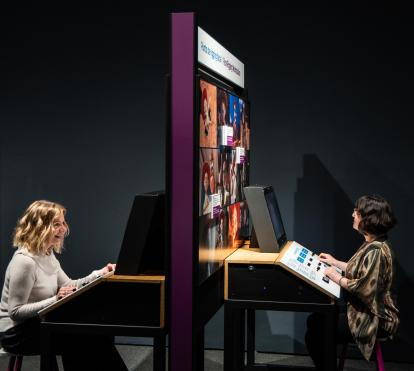
Beyond the exhibition halls: activities to broaden knowledge of Pixar
Throughout the months that the exhibition will remain at CaixaForum Madrid, the ”la Caixa” Foundation will be offering various activities to bring the art and science of Pixar closer to all audiences. On the one hand, a cycle of screenings has been programmed for Young Filmgoers with some of their best films: A Bug’s Life, Toy Story and The Incredibles. At the beginning of each session of this cycle, the CaixaForum educational team presents the film, providing the basic keys to interpreting and enjoying it and, at the end of the screening, invites the audience to participate in a family discussion.
Another highlight will be the family conference 3D Animation: between art and science, in which Edu Martín, 3D creative director and supervisor, who has been part of teams at such prestigious international companies as Animal Logic (The LEGO Movie), Skydance (Top Gun Maverick) and Pixar, will talk about the creation process of this type of production. He will give us an insight into how the films we are so excited about are made, and we will see live how this technology is used in seemingly distant productions like advertising.
In addition, the general public can take a guided tour and families can choose between the family tour and the animated stories workshop-tour, where visitors can make a short, animated clip to understand all the phases of the creative process after visiting the exhibition.

Support for The Science Behind Pixar
The Science Behind Pixar is funded through support by Google, members of the Science Museum Exhibit Collaborative (SMEC), Institute of Museum and Library Services (IMLS) and the National Science Foundation (NSF).
About Pixar Animation Studios
Pixar Animation Studios, a wholly owned subsidiary of The Walt Disney Company, is an Academy Award®-winning film studio with world-renowned technical, creative and production capabilities in the art of computer animation. The Northern California studio has created some of the most successful and beloved animated films of all time, including Toy Story, Monsters, Inc., Cars, The Incredibles, Ratatouille, WALL•E, Up, Brave, Inside Out, Coco and Turning Red. Its movies and technology have won 40 Academy Awards® and the films have grossed more than $14 billion at the worldwide box office. Inside Out 2, Pixar's 28th feature, will be released in theaters June 14, 2024.
